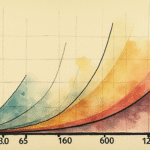Background on Jerome Powell and the Federal Reserve
Jerome Powell, the Chair of the Federal Reserve (Fed), plays a pivotal role in shaping U.S. monetary policy and influencing financial markets. As the head of the central bank, Powell’s statements and decisions on interest rates significantly impact investor expectations and market behavior.
Fed’s Decision to Maintain Interest Rates
On Wednesday, the Federal Reserve decided to keep interest rates unchanged, as widely anticipated by market participants. The decision was made amidst a divided vote among Fed governors, with two dissenting opinions. The statement emphasized that the unemployment rate remains low, labor market conditions are robust, and inflation stays somewhat elevated.
Market Reaction to Fed’s Decision
Prior to the Fed’s announcement, stocks experienced a slight increase as investors evaluated the initial reading of second-quarter economic growth, which exceeded expectations. However, underlying details suggested a potentially weakening economy.
Following Powell’s remarks, stocks retreated. He indicated that it was premature to predict whether the central bank would cut rates at its September meeting and highlighted that the current moderately restrictive monetary policy hadn’t stifled economic growth.
Expert Analysis on Powell’s Stance
JP Powers, Director of Investments at RWA Wealth Partners, commented on the Fed’s decision:
“There weren’t many changes in the statement, still expressing concern about how trade policies are being implemented and likely not relying heavily on recently published data.”
“If I were Powell, I’m unsure how much he thinks about his legacy, but I believe he’ll err on the side of caution, probably too late to cut rates before his exit rather than risking a downturn as we approach the end.”
Market Performance on Wednesday
The S&P 500 fell by 0.12% to close at 6,362.95 points; the Nasdaq Composite rose by 0.15% to reach 21,129.67 points; and the Dow Jones Industrial Average dropped 0.38% to end at 44,461.28 points.
Mexican Stock Market Performance
The Mexican stock market also experienced a downward session on Wednesday following the release of various domestic and international economic data.
At the close, the S&P/BMV IPC of the Mexican Stock Exchange (BMV) declined by 0.73% to 57,395.85 points, while the FTSE-BIVA, the most representative index of the Institutional Securities Market (Biva), fell by 0.67% to 1,153.79 units.
This marked the second decline in three sessions, though both indices remained near their highest levels in three weeks. Investors acknowledged that Mexico’s GDP growth surpassed expectations in the second quarter, driven by a strong industrial sector performance.
Public sector revenues increased in the first half of the year, combined with reduced expenditures, leading to a primary budget surplus exceeding authorities’ estimates.
Key Questions and Answers
- Who is Jerome Powell? Jerome Powell is the Chair of the Federal Reserve, responsible for overseeing U.S. monetary policy and influencing financial markets.
- What did the Federal Reserve decide? The Fed maintained interest rates, citing low unemployment, robust labor market conditions, and somewhat elevated inflation.
- How did the U.S. stock market react? Stocks initially rose due to better-than-expected GDP growth but fell after Powell’s remarks, indicating it was too early to predict a rate cut in September.
- What happened to the Mexican stock market? The Mexican stock market also experienced a downward session, influenced by economic data releases and acknowledging Mexico’s GDP growth surpassing expectations in the second quarter.






